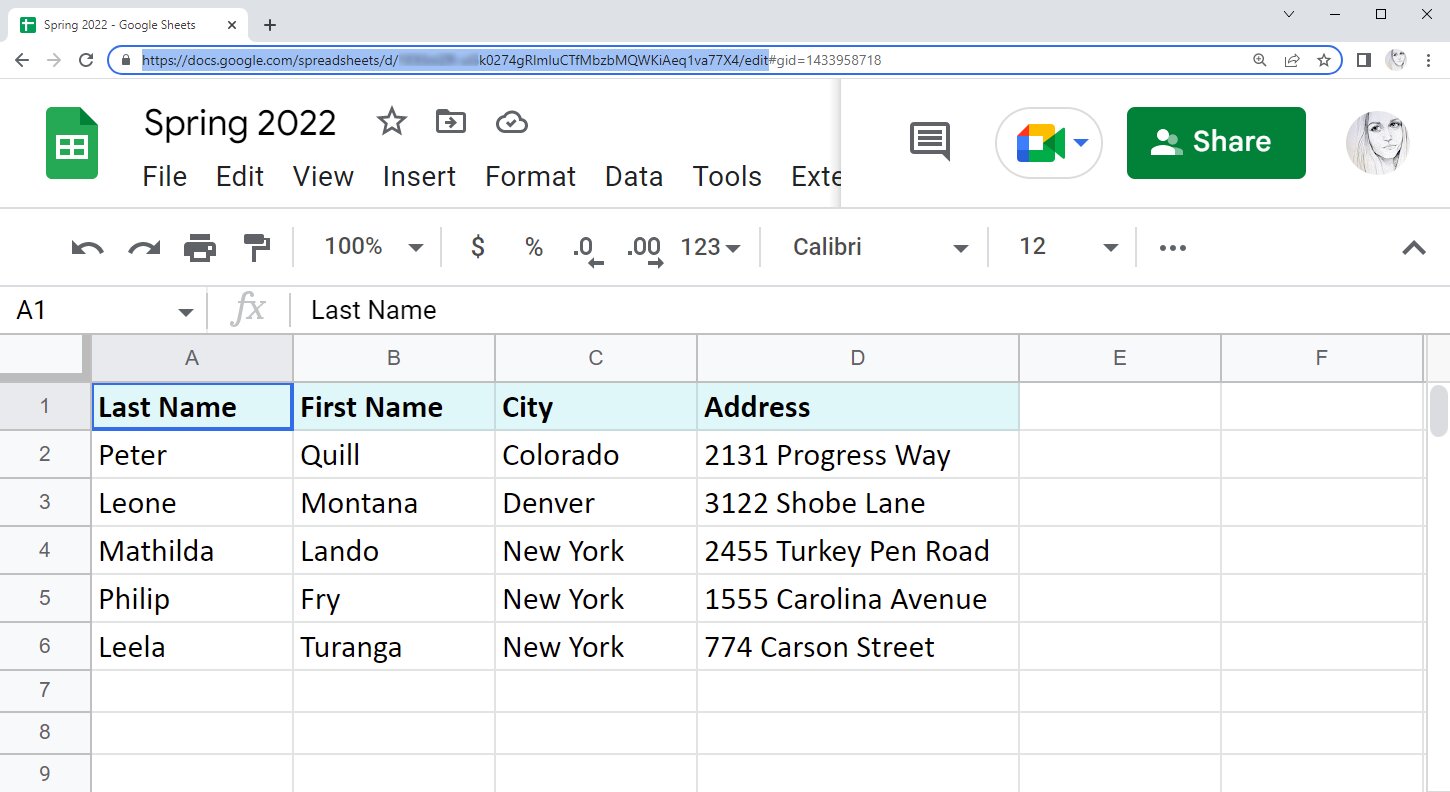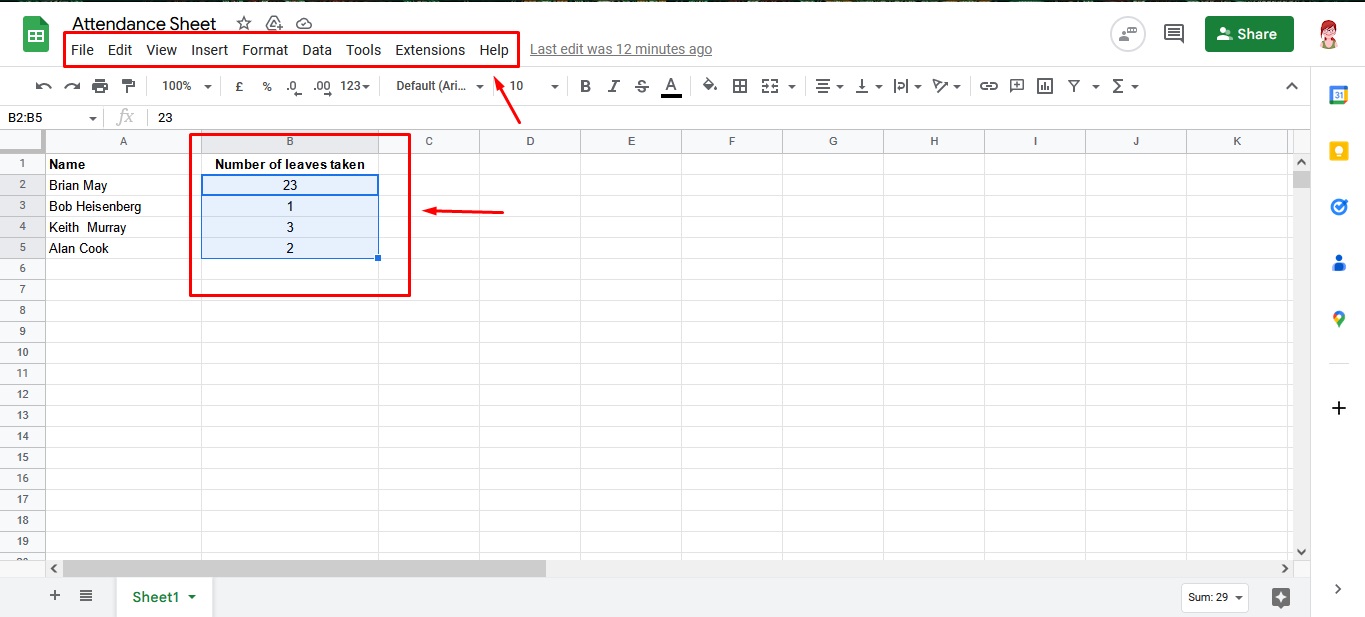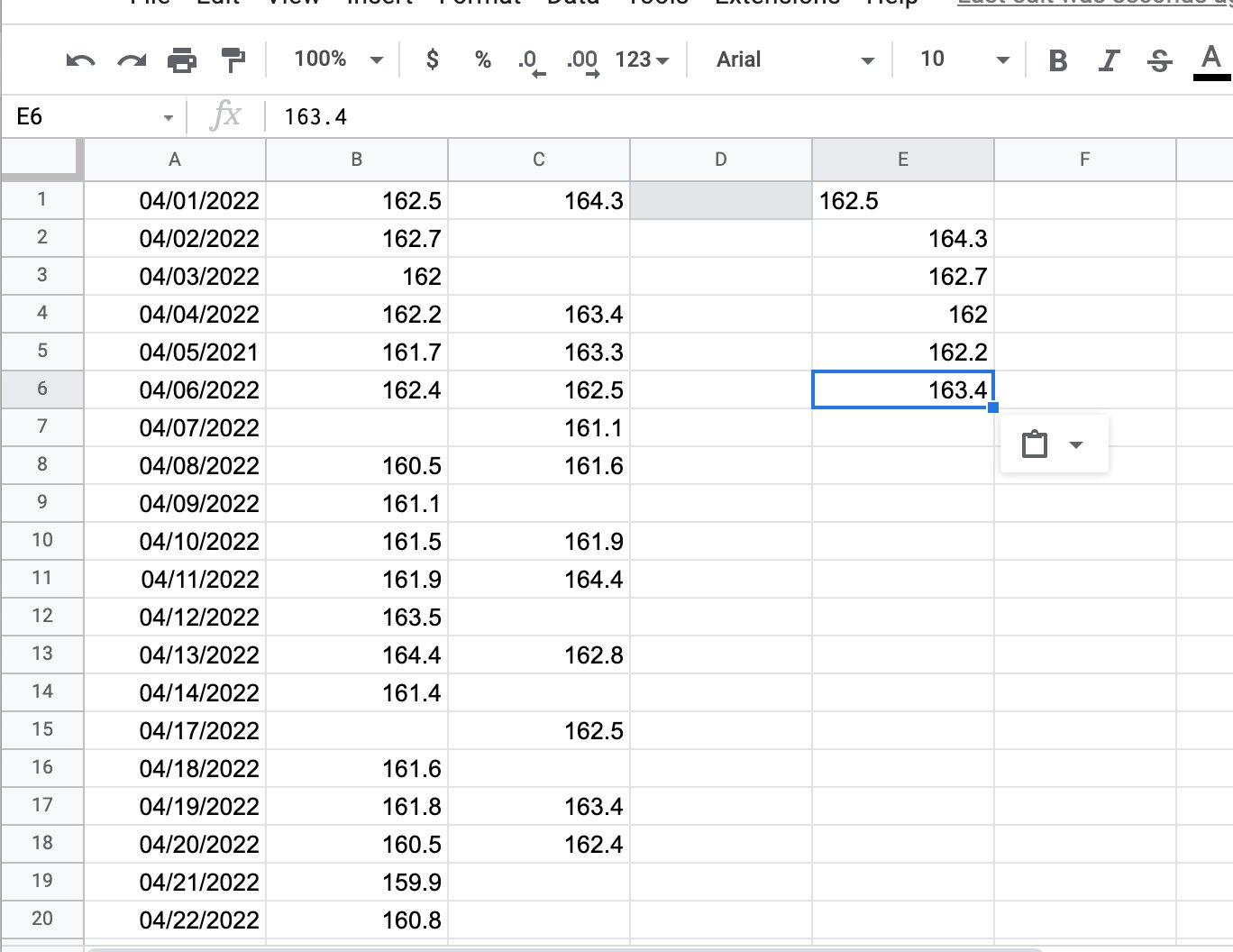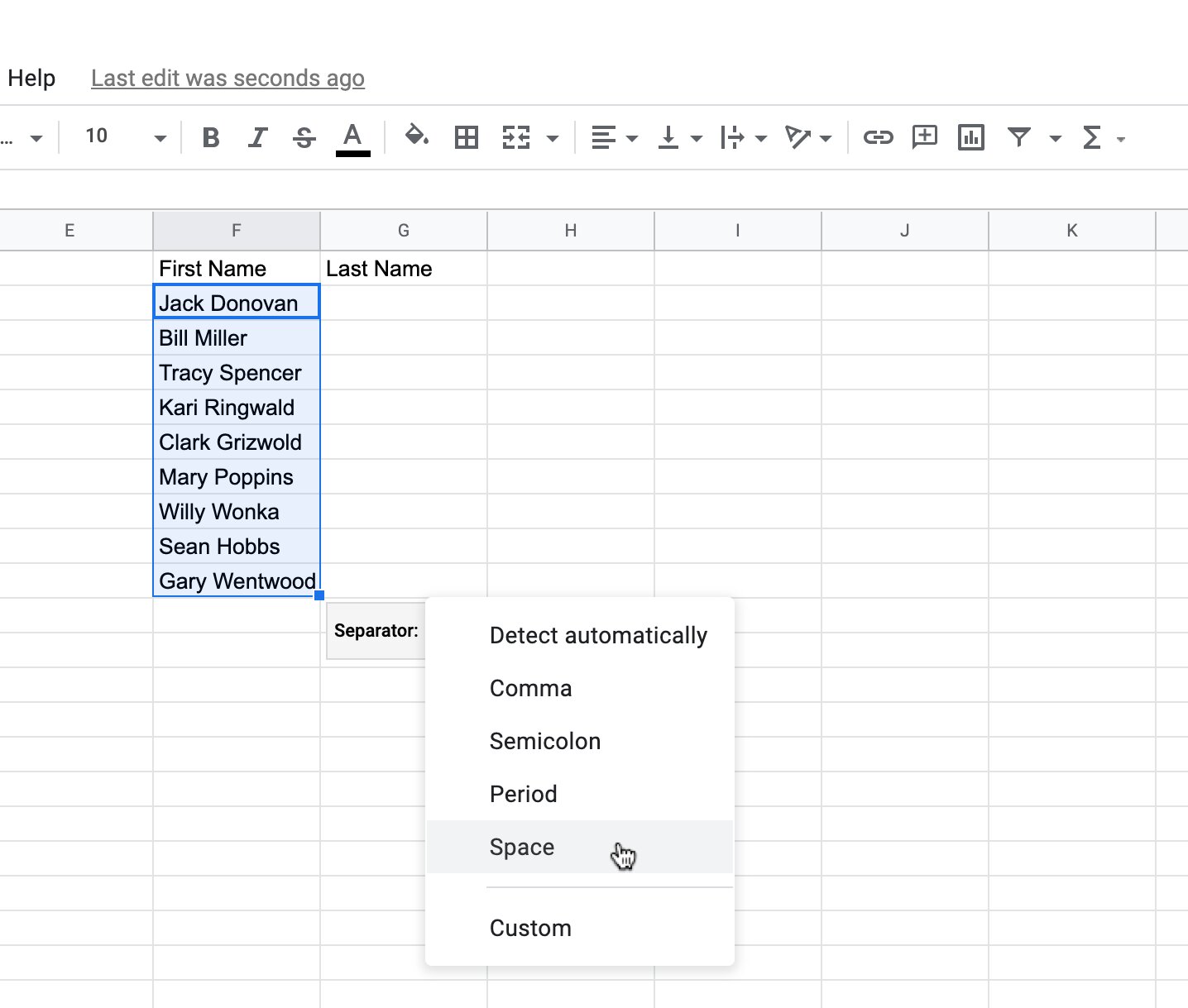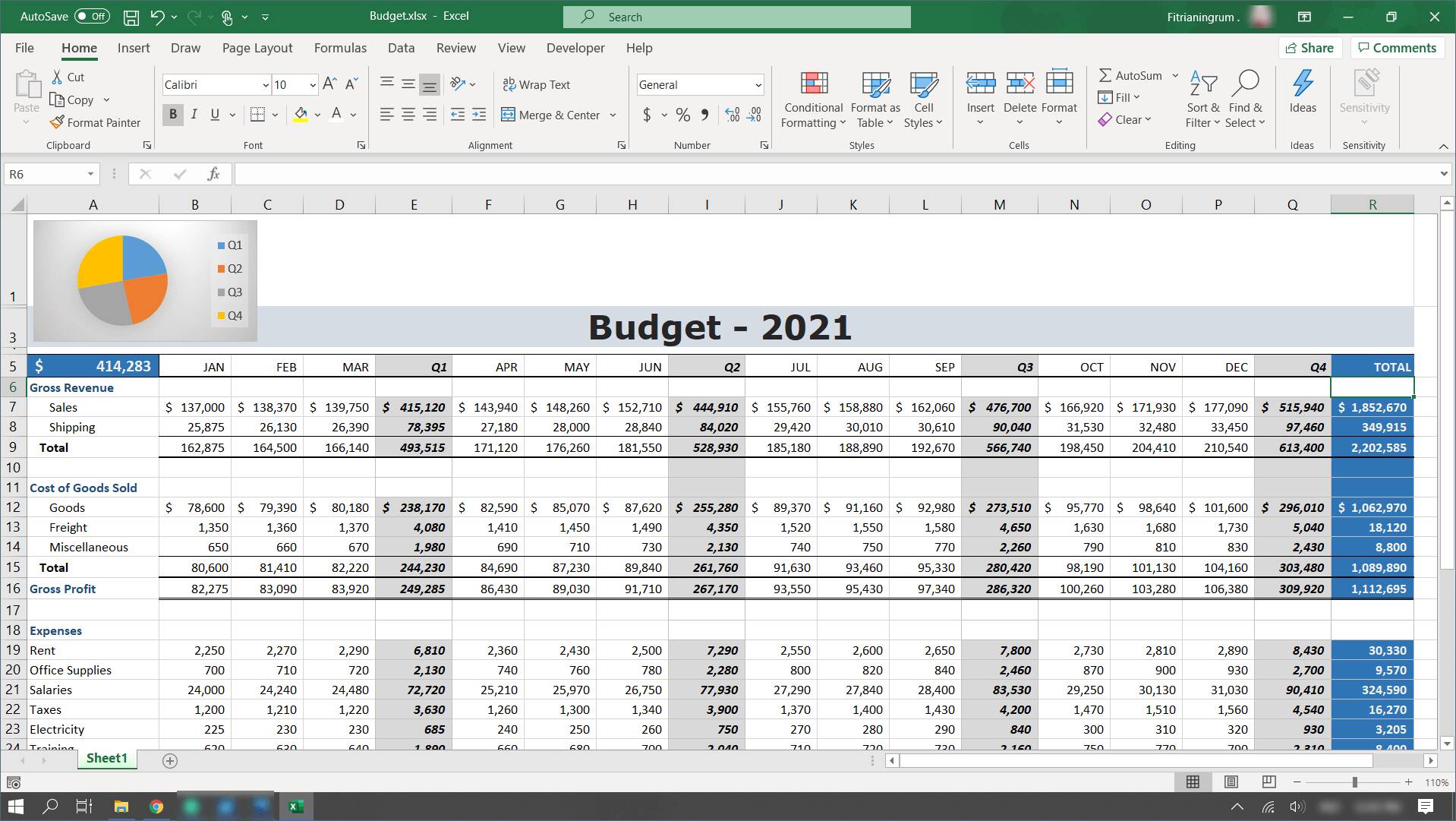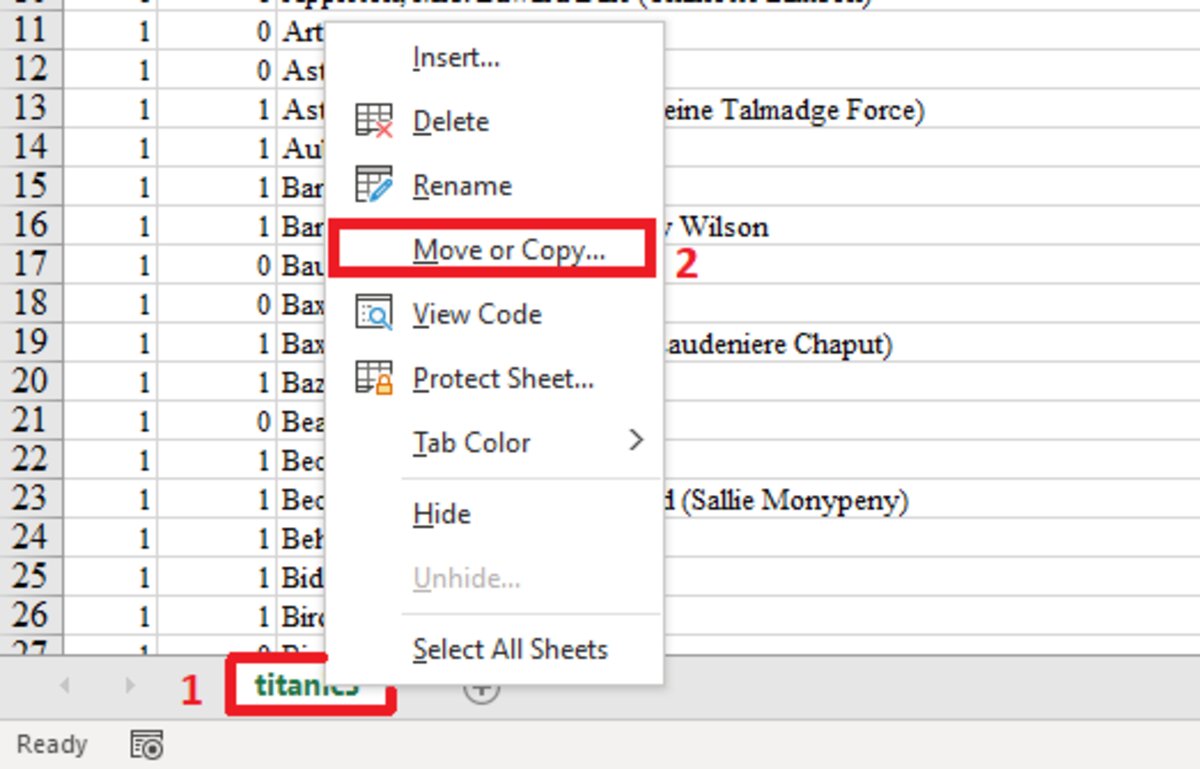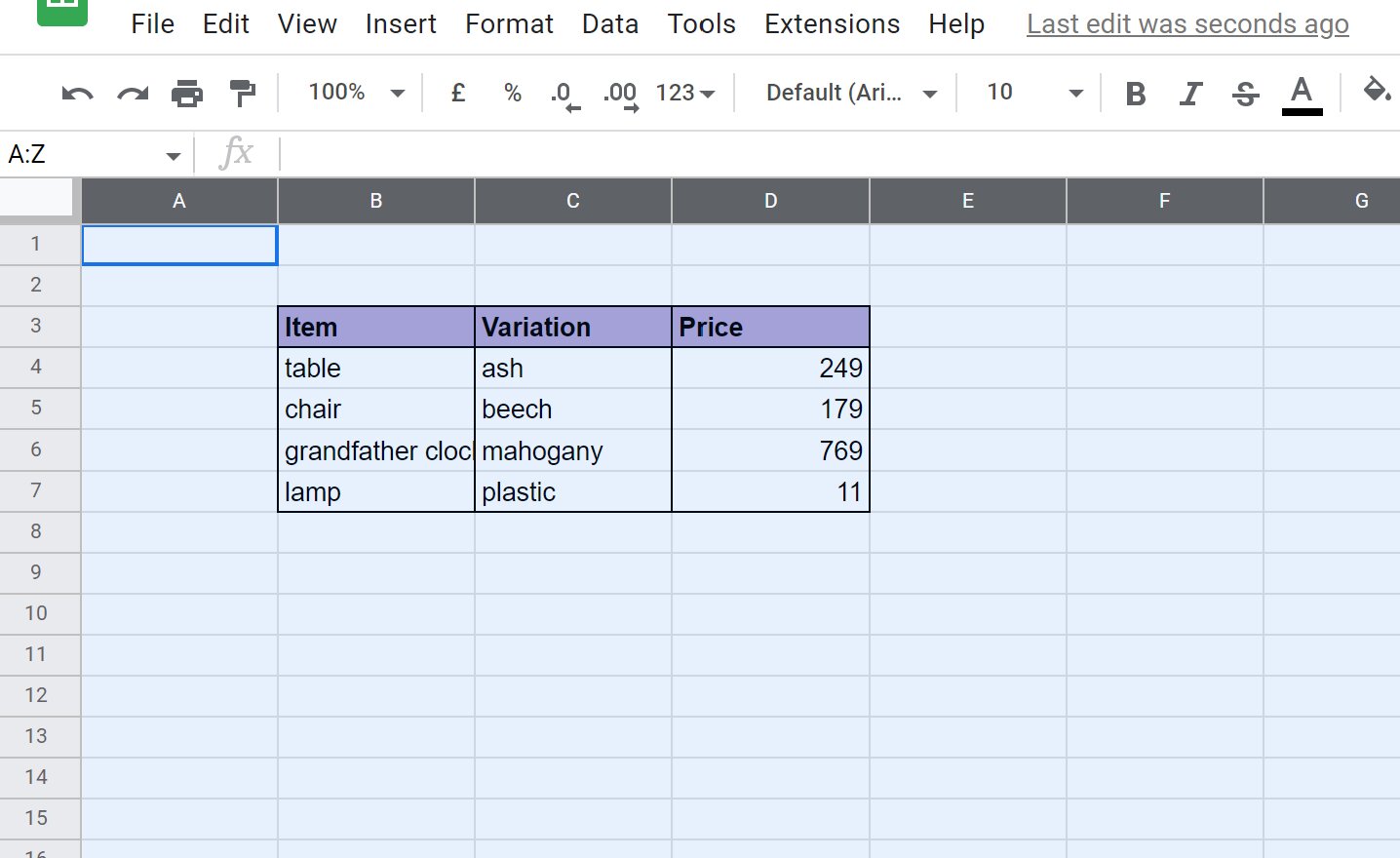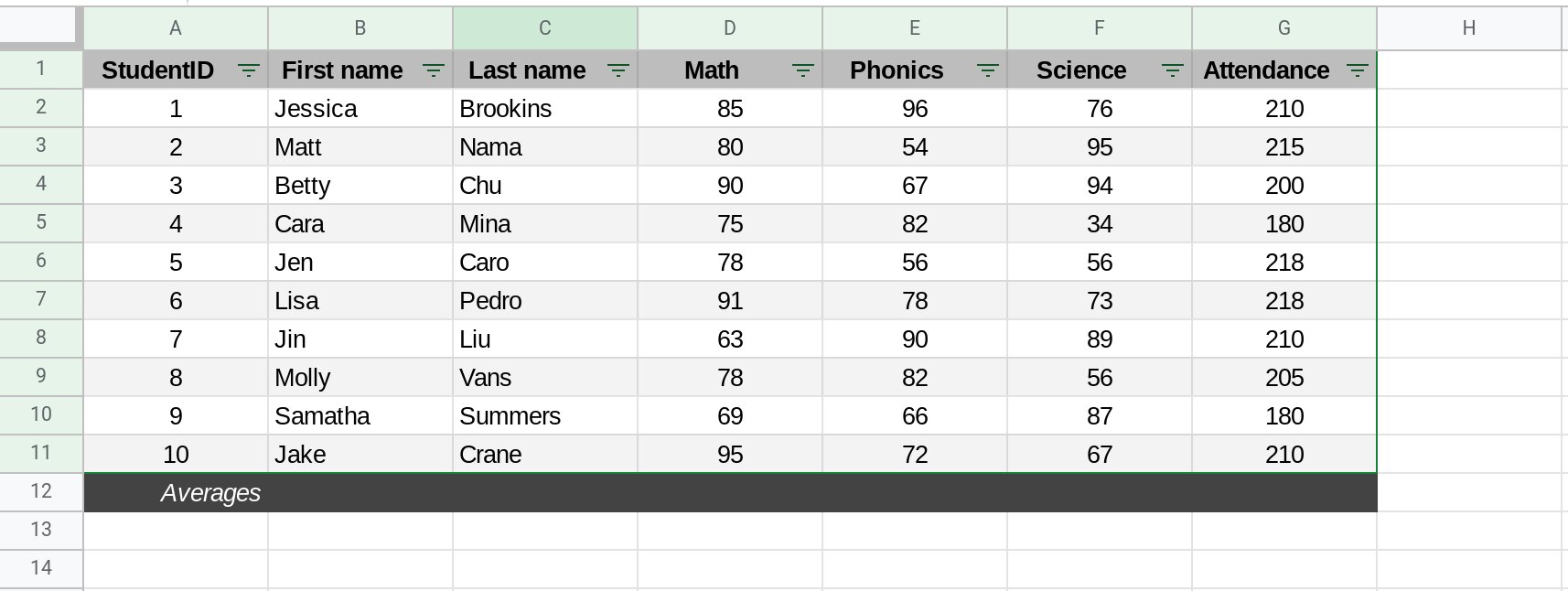Introduction
Welcome to this comprehensive guide on how to merge Google Sheets! Google Sheets is a powerful tool that allows you to create and manage spreadsheets online. With its collaborative features and extensive functionality, it has become a popular choice for businesses, teams, and individuals looking to organize and analyze data.
So, why would you need to merge Google Sheets? There are several scenarios where merging data from multiple sheets becomes necessary. Perhaps you are working on a project with multiple team members, each working on a separate sheet. Or maybe you have different sources of data that you need to combine into a single sheet for easier analysis. Whatever the reason, knowing how to merge Google Sheets effectively can save you time and effort.
In this guide, we will explore different methods to merge Google Sheets, ranging from simple copy and paste techniques to more advanced functions and add-ons. Each method has its own advantages and can be chosen based on your specific requirements and comfort level with using formulas and functions.
We will walk you through the step-by-step instructions on how to use the ImportRange function, copy and paste data, leverage the IMPORTRANGE and QUERY functions, utilize the appendRows function, and take advantage of third-party add-ons to merge your Google Sheets. With these methods at your disposal, you’ll have the flexibility to merge and consolidate your data efficiently.
But wait, what if you don’t have any experience with Google Sheets or you’re not familiar with spreadsheet functions? Don’t worry! This guide will provide clear explanations and detailed instructions, making it accessible to users of all levels. So whether you’re a beginner or an experienced user, you’ll be able to follow along and merge your Google Sheets like a pro.
Now that you understand the importance and potential benefits of merging Google Sheets, let’s jump right in and explore the various methods you can use to accomplish this task. The following sections will provide you with detailed instructions to merge your sheets using different techniques. So grab your coffee, get comfortable, and let’s dive in!
What is Google Sheets?
Google Sheets is a cloud-based spreadsheet application developed by Google. It is part of Google’s suite of productivity tools known as Google Drive. Similar to Microsoft Excel, Google Sheets allows users to create, edit, and collaborate on spreadsheets in real-time, all within a web browser.
One of the key advantages of Google Sheets is its accessibility and ease of use. Since it is web-based, there is no need to download or install any software. Simply log in to your Google account and access Google Sheets from any device with an internet connection. This makes it a convenient option for individuals and teams who work remotely or need to access their spreadsheets on the go.
Google Sheets offers a wide range of features and functions that enable users to organize, analyze, and manipulate data effectively. From basic calculations to complex formulas, Google Sheets provides the tools necessary to perform tasks such as data entry, data validation, conditional formatting, and more.
Collaboration is another key strength of Google Sheets. Multiple users can work on a spreadsheet simultaneously, making it an ideal tool for team projects and collaborative data analysis. Users can leave comments, suggest edits, and track changes in real-time, streamlining the collaboration process and enhancing productivity.
Google Sheets also integrates seamlessly with other Google services, such as Google Docs and Google Slides. This allows users to import data from other documents, create charts and graphs, and generate reports using the data in their Sheets.
Furthermore, Google Sheets offers a variety of pre-built templates for different purposes, including budgets, project management, inventory tracking, and more. These templates serve as a starting point for users, providing them with a foundation to build upon and customize according to their specific needs.
Another noteworthy feature of Google Sheets is its compatibility with Microsoft Excel files. Users can easily import and export Excel files in various formats, allowing for seamless transfer of data between the two applications.
Overall, Google Sheets is a versatile and powerful spreadsheet tool that offers a wide range of features and benefits. Whether you’re a student, professional, or small business owner, Google Sheets provides a user-friendly platform for creating, managing, and analyzing your data. Now that you understand what Google Sheets is, let’s move on to exploring the different methods to merge your Sheets.
Why Merge Google Sheets?
Merging Google Sheets can bring numerous advantages and benefits depending on your specific needs and circumstances. Let’s explore some of the key reasons why you might want to merge your Google Sheets:
1. Consolidate Data: When working on projects that involve multiple team members or multiple data sources, merging Google Sheets allows you to consolidate all the data into a single, unified sheet. This makes it easier to analyze and interpret the data, eliminating the need to switch between multiple sheets or documents.
2. Streamline Collaboration: Merging Google Sheets enables seamless collaboration among team members. Instead of each person working on separate sheets, merging allows everyone to work on a shared sheet, facilitating real-time collaboration, data synchronization, and efficient teamwork.
3. Perform Comprehensive Analysis: By merging multiple Google Sheets, you can gather and analyze data from different sources or time periods. This allows you to perform comprehensive analysis, identify trends, make informed decisions, and gain deeper insights into your data.
4. Save Time and Effort: Manually combining data from different sheets can be tedious and time-consuming. By merging Google Sheets, you can automate the process and save valuable time and effort. This is especially beneficial when dealing with large datasets or repetitive tasks.
5. Maintain Data Integrity: Merging Google Sheets helps ensure data integrity and consistency. When data is scattered across multiple sheets, it’s easier for errors to occur, such as duplicate entries or incomplete information. By merging sheets, you can reduce the risk of errors and maintain a single, reliable source of data.
6. Simplify Reporting and Presentations: Merging Google Sheets allows you to create comprehensive reports and presentations by combining data from different sources. This makes it easier to present information to stakeholders, clients, or colleagues, and enhances the clarity and impact of your reports.
7. Enhance Data Visualization: By merging Google Sheets, you can create a larger dataset that provides a broader context for visualizations and charts. This can lead to more insightful and meaningful visual representations of your data, improving overall data visualization and communication.
Whether you’re a business professional, researcher, student, or anyone working with data, merging Google Sheets can greatly streamline your workflow, enhance collaboration, and enable you to gain valuable insights from your data. Now that you understand the benefits of merging Sheets, let’s explore different methods to combine your Google Sheets effectively.
Method 1: Using the ImportRange Function
One of the simplest and most versatile methods to merge Google Sheets is by using the ImportRange function. The ImportRange function allows you to pull data from one sheet into another, even if they are in different spreadsheets. Here’s how you can use this function:
Step 1: Open the destination sheet where you want to merge the data. This will be the sheet where you want the data from the source sheet to be imported.
Step 2: In an empty cell of the destination sheet, enter the following formula:
=IMPORTRANGE("source_spreadsheet_url", "sheet_name!range")
Replace “source_spreadsheet_url” with the URL of the source spreadsheet that contains the data you want to merge. Replace “sheet_name!range” with the specific sheet name and range that you want to import, for example, “Sheet1!A1:B10”.
Step 3: Press Enter to import the data. You may be prompted to grant permission for the destination sheet to access the source sheet. Follow the prompts and authorize the access.
Once the formula is entered and the data is imported, any changes made to the source sheet will automatically be reflected in the destination sheet. This ensures that the merged data stays up to date.
Keep in mind that the ImportRange function works between different sheets in the same spreadsheet, as well as between different spreadsheets. This means you can merge data from multiple sources into a single sheet, making it a powerful tool for combining and consolidating data.
Furthermore, you can use other functions alongside ImportRange to manipulate and analyze the imported data. This includes functions like SUM, AVERAGE, COUNT, and more.
The ImportRange function is a simple and efficient way to merge Google Sheets, especially when you need to merge data from different sources into a single sheet. It saves you time and effort by automating the process and keeping the merged data up to date. Now that you understand how to use the ImportRange function, let’s explore other methods of merging Google Sheets.
Method 2: Copying and Pasting Data
If you’re looking for a simple and straightforward method to merge Google Sheets, copying and pasting data can be a quick solution. This method is especially useful when you have a small amount of data or when you want to merge specific ranges of data. Here’s how you can use this method:
Step 1: Open the source sheet that contains the data you want to merge.
Step 2: Select the desired range of cells you want to merge. You can do this by clicking and dragging your cursor over the cells, or by holding Shift and using the arrow keys to select a range.
Step 3: Right-click on the selected range and choose “Copy”.
Step 4: Open the destination sheet where you want to merge the data.
Step 5: Select the cell in the destination sheet where you want the data to start merging.
Step 6: Right-click on the selected cell and choose “Paste”. Alternatively, you can use the keyboard shortcut Ctrl+V (Windows) or Command+V (Mac) to paste the data.
The selected range of data from the source sheet will be copied and pasted into the destination sheet. Keep in mind that this method will copy the data itself, but not any formulas or formatting that may be present in the source sheet.
If you want to merge additional ranges of data from the same or different sheets, you can repeat the above steps. Simply select the new range of data, copy it, and paste it into the destination sheet below the previously merged data.
This method allows you to merge data quickly and easily without the need for complex formulas or functions. However, it is important to note that any changes made to the source sheet after copying and pasting will not be reflected in the destination sheet. To ensure you have the most up-to-date data, you may need to repeat the copying and pasting process as needed.
Now that you’re familiar with the second method of merging Google Sheets, let’s move on to exploring another technique: using the IMPORTRANGE and QUERY functions.
Method 3: Using the IMPORTRANGE and QUERY Functions
If you’re looking for a more advanced method to merge Google Sheets, you can use a combination of the IMPORTRANGE and QUERY functions. This approach allows you to not only merge data from different sheets but also perform more complex operations on the merged data. Here’s how you can use this method:
Step 1: Open the destination sheet where you want to merge the data.
Step 2: In an empty cell of the destination sheet, enter the following formula:
=QUERY({IMPORTRANGE("source_spreadsheet1_url", "sheet_name1!range1"); IMPORTRANGE("source_spreadsheet2_url", "sheet_name2!range2")}, "SELECT * WHERE Col1 IS NOT NULL")
Replace “source_spreadsheet1_url” with the URL of the first source spreadsheet and “sheet_name1!range1” with the specific sheet name and range you want to import from the first source. Repeat the same steps for additional source spreadsheets, adjusting the URLs, sheet names, and ranges accordingly.
Note: The curly braces {} are used to combine multiple ranges into one array.
Step 3: Press Enter to import and merge the data. The QUERY function will combine the imported ranges from different sources into a single array and return the merged result.
The QUERY function allows you to perform various operations on the merged data. For example, you can filter, sort, aggregate, or perform calculations on the imported data using SQL-like syntax within the QUERY function. This provides you with more flexibility in terms of data manipulation and analysis.
By combining the IMPORTRANGE and QUERY functions, you can merge data from multiple Google Sheets and apply advanced data operations all in one step. This method is particularly useful when you want to merge and manipulate data from different sources or when you need to perform complex analysis on the merged data.
Keep in mind that when using the IMPORTRANGE function, you may need to authorize access to the source spreadsheets during the initial setup. Additionally, any changes made in the source spreadsheets will automatically be reflected in the merged data, ensuring that you always have the most up-to-date information.
Now that you understand how to merge Google Sheets using the IMPORTRANGE and QUERY functions, let’s move on to exploring another method: using the appendRows function.
Method 4: Using the appendRows Function
Another method to merge Google Sheets is by utilizing the appendRows function, which allows you to add rows from one sheet to another. This method is particularly useful when you want to combine multiple sheets vertically. Here’s how you can use this method:
Step 1: Open the destination sheet where you want to merge the data.
Step 2: Open the source sheet containing the rows you want to merge.
Step 3: Select the range of cells in the source sheet that you want to merge and copy them by right-clicking and choosing “Copy” or using the keyboard shortcut Ctrl+C (Windows) or Command+C (Mac).
Step 4: Return to the destination sheet and select the starting cell where you want to append the data.
Step 5: Right-click on the selected starting cell and choose “Paste Special” from the context menu.
Step 6: In “Paste Special,” select “Paste values only” to paste the actual values without any formulas or formatting.
Step 7: Click “Ok” to paste the values and merge the rows into the destination sheet.
The appendRows function allows you to vertically combine the rows from the source sheet with the existing data in the destination sheet. This method can be helpful when you need to merge sheets that have a similar structure or when you want to consolidate data from different sources into a single sheet.
It’s important to note that this method only merges rows and does not automatically update the merged data. If there are any changes in the source sheet, you’ll need to repeat the copy and paste process to update the merged data in the destination sheet.
Now that you understand how to merge Google Sheets using the appendRows function, let’s explore another method: utilizing third-party add-ons.
Method 5: Using Third-Party Add-ons
If you’re looking for additional functionality and customization options when merging Google Sheets, using third-party add-ons can be a great solution. These add-ons provide advanced features and tools that make the merging process even more efficient and streamlined. Here’s how you can use this method:
Step 1: Open the destination sheet where you want to merge the data.
Step 2: Click on “Add-ons” in the menu bar at the top of your Google Sheets.
Step 3: Select “Get add-ons” from the drop-down menu.
Step 4: In the Add-ons store, search for add-ons that specifically cater to merging Google Sheets. Some popular add-ons include “Merge Sheets” and “Sheetgo”.
Step 5: Click on the add-on you want to install and follow the prompts to install it.
Step 6: Once the add-on is installed, you can access its features from the “Add-ons” menu in Google Sheets.
Third-party add-ons provide a wide range of features to facilitate the merging of Google Sheets. These features can include the ability to merge sheets with different structures, merge sheets automatically based on specific criteria, schedule automated merging processes, and more.
Additionally, add-ons often offer advanced customization options to adjust how the data is merged, such as specifying the order of columns, handling duplicate entries, and handling formatting and formulas. This level of flexibility allows you to tailor the merging process to match your specific requirements.
Before installing an add-on, be sure to review user reviews and ratings to ensure its reliability and suitability for your needs. It’s also important to note that some add-ons may have a cost associated with them, so consider your budget and requirements before making a decision.
Now that you understand how to merge Google Sheets using third-party add-ons, you have even more options to enhance your merging capabilities. Experiment with different add-ons and find the one that best suits your needs.
Conclusion
Google Sheets provides various methods to merge data and streamline your spreadsheet workflow. Whether you’re collaborating with a team, consolidating data from multiple sources, or performing complex analysis, knowing how to merge Google Sheets effectively can save you time and effort.
In this guide, we explored five different methods to merge Google Sheets:
- Using the ImportRange function: This method allows you to import data from one sheet to another, even if they are in different spreadsheets. It’s a versatile and straightforward way to merge data without the need for complex formulas or functions.
- Copying and pasting data: This method is simple and efficient, especially for merging smaller amounts of data or specific ranges. It’s a quick solution that doesn’t require any formulas or special functions.
- Using the IMPORTRANGE and QUERY functions: By leveraging these functions, you can merge data from multiple sheets and perform advanced operations, such as filtering, sorting, and aggregating the merged data.
- Using the appendRows function: This method allows you to add rows from one sheet to another vertically. It’s useful when you want to combine sheets with a similar structure or when you need to consolidate data from different sources into a single sheet.
- Using third-party add-ons: Third-party add-ons provide additional functionality and customization options for merging Google Sheets. These add-ons offer advanced features, automation, and customization to enhance the merging process.
Each method has its own advantages and can be chosen based on your specific needs and comfort level with using formulas and add-ons. By understanding and utilizing these different methods, you can efficiently merge your Google Sheets and optimize your data management and analysis.
Remember, merging Google Sheets allows you to consolidate data, streamline collaboration, perform comprehensive analysis, and save time and effort. Whether you’re a business professional, researcher, student, or anyone working with data, these merging techniques can greatly improve your spreadsheet workflow.
So, what are you waiting for? Start merging your Google Sheets today and unlock the full potential of your data!







